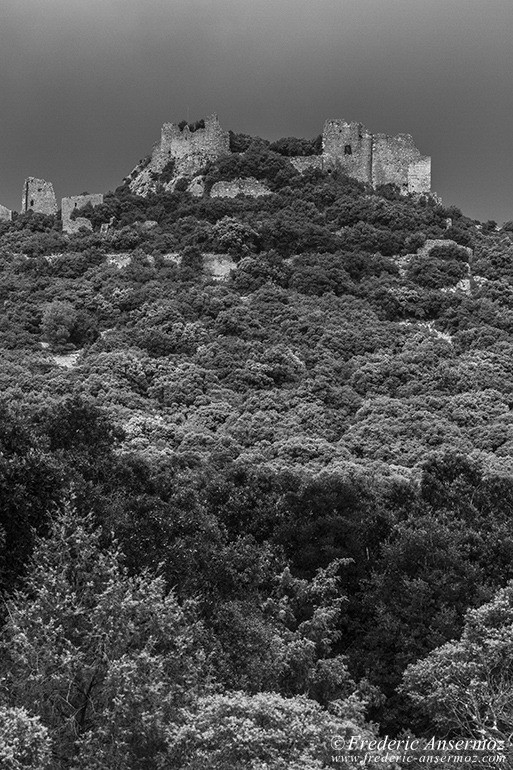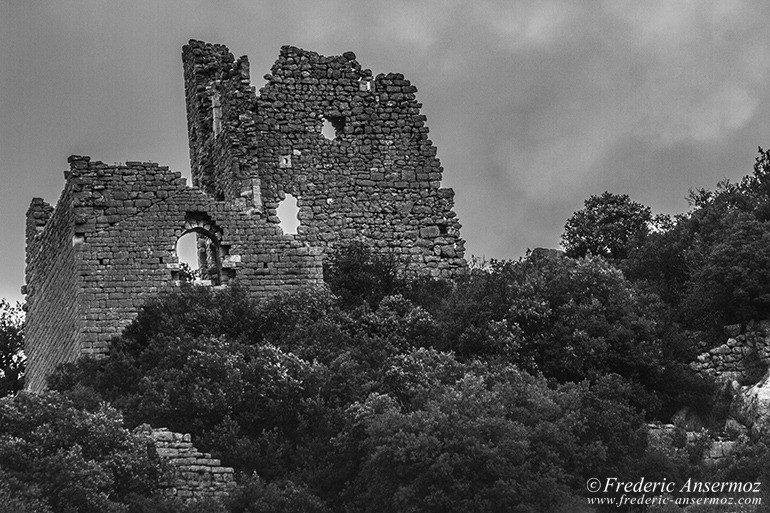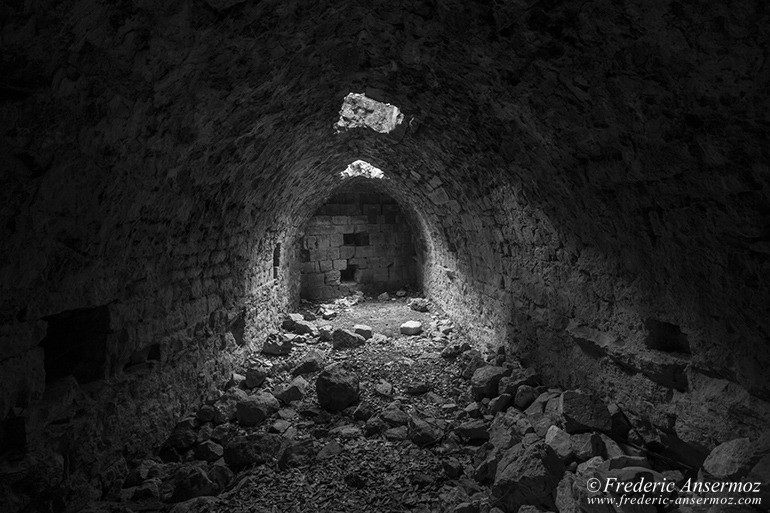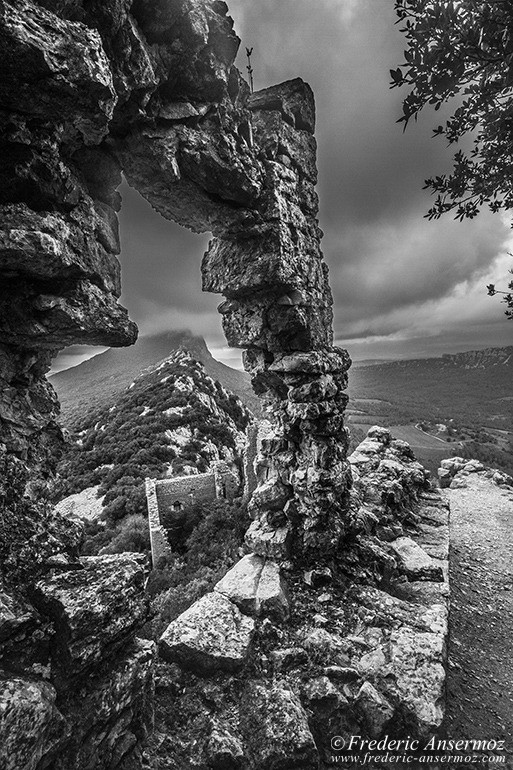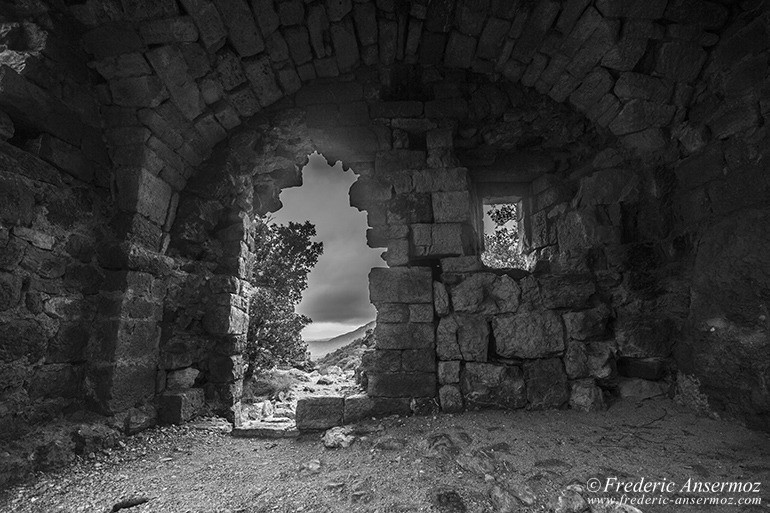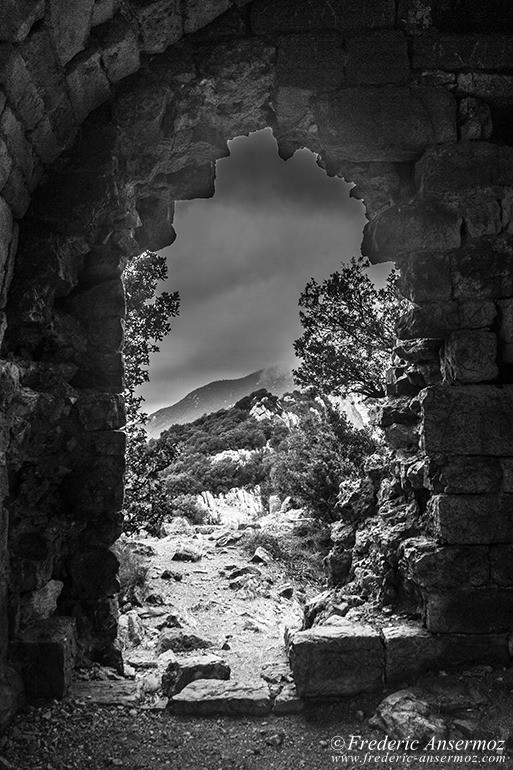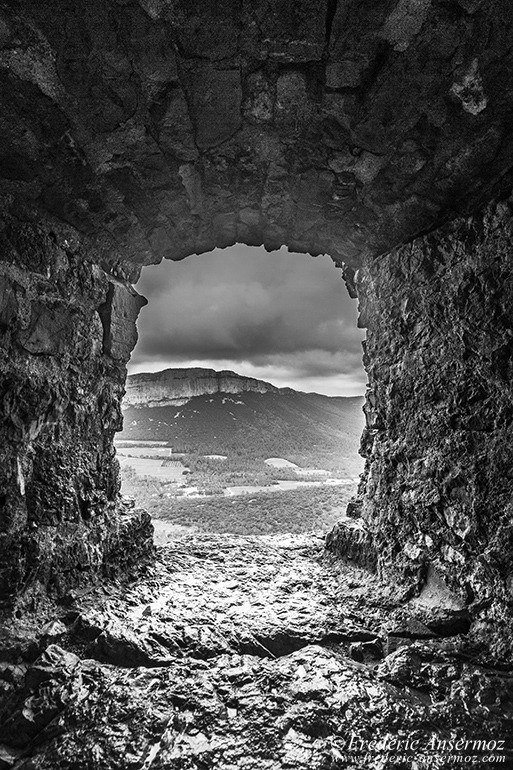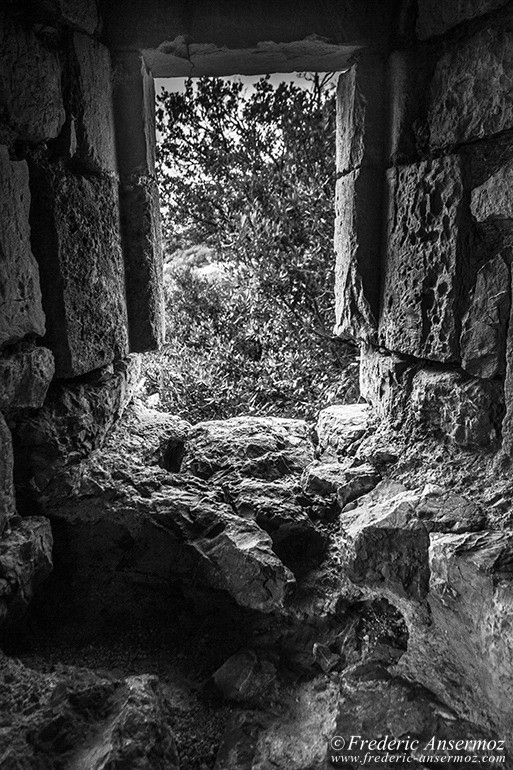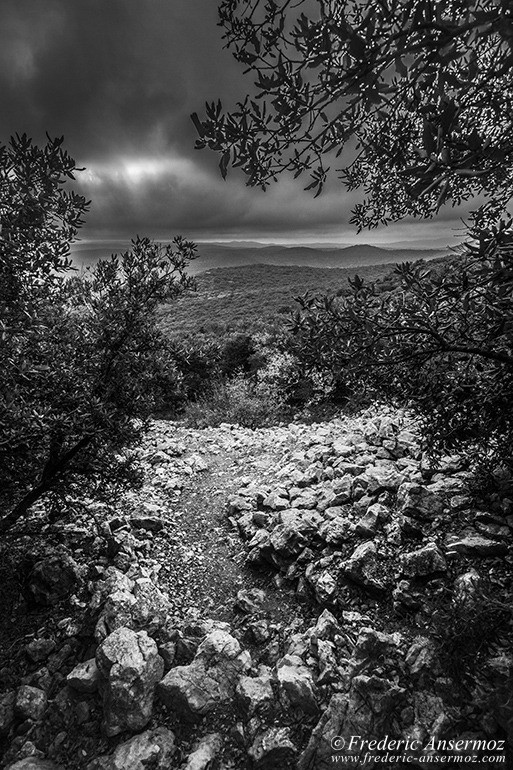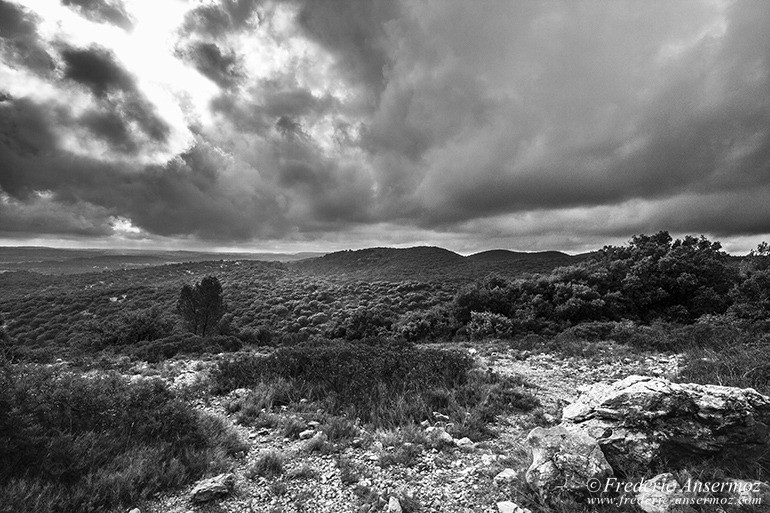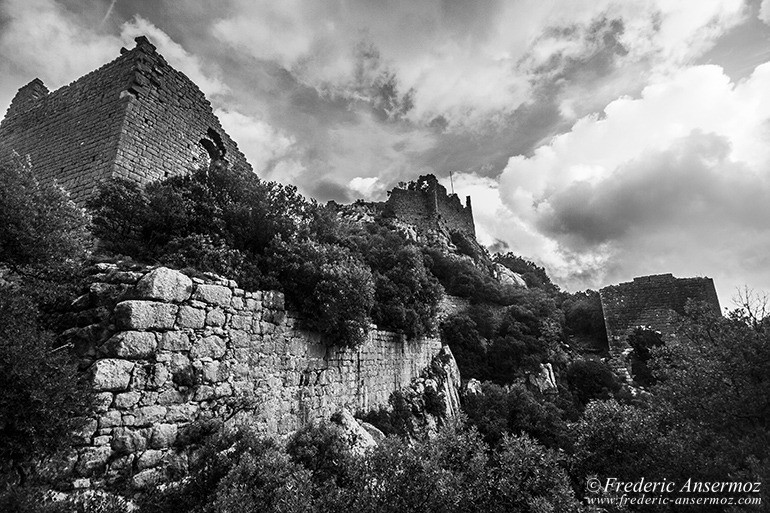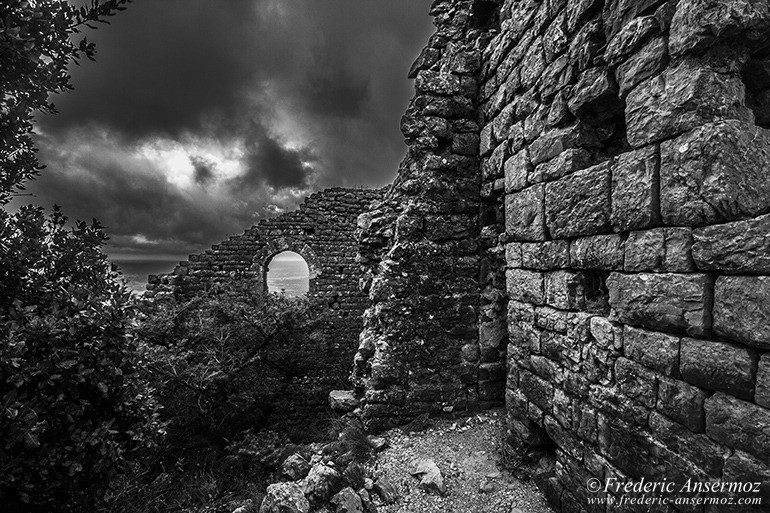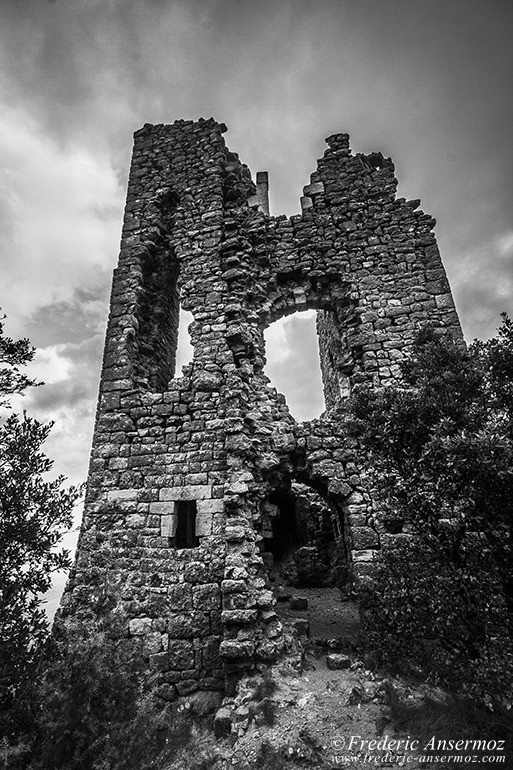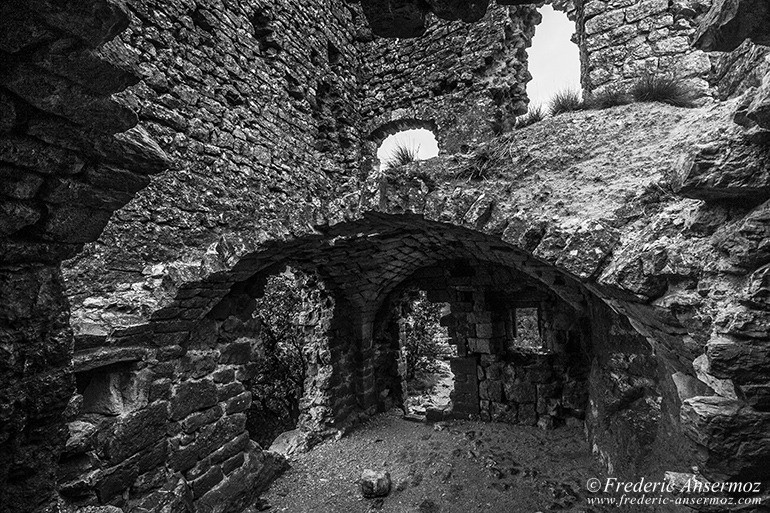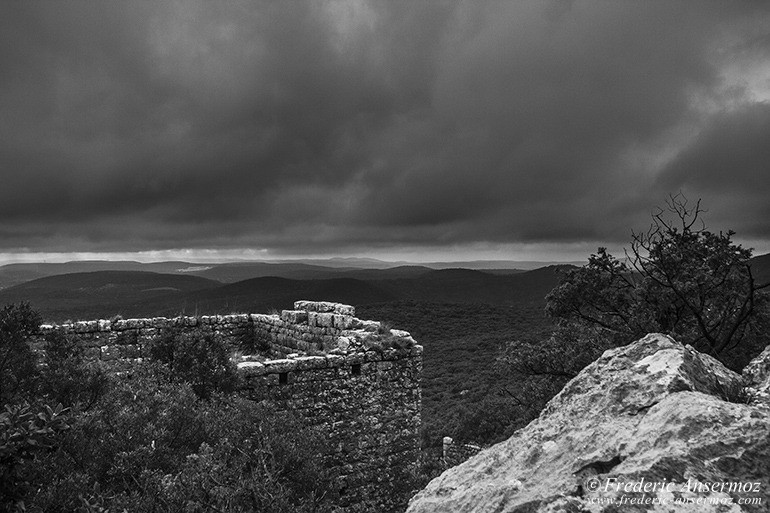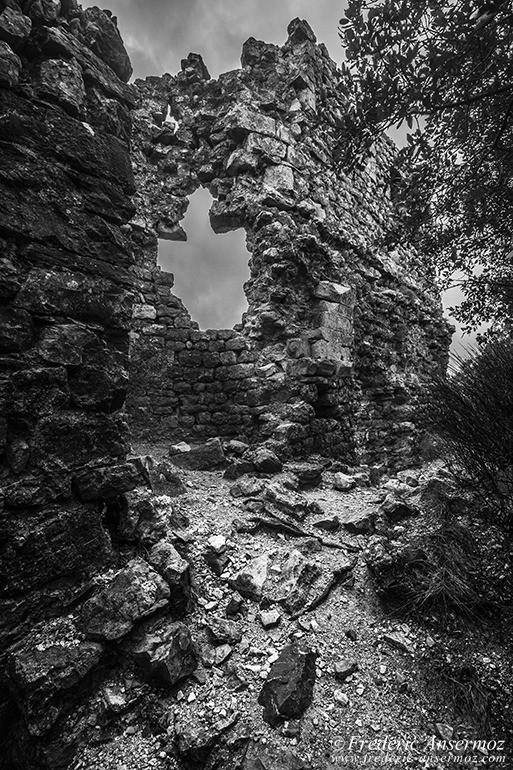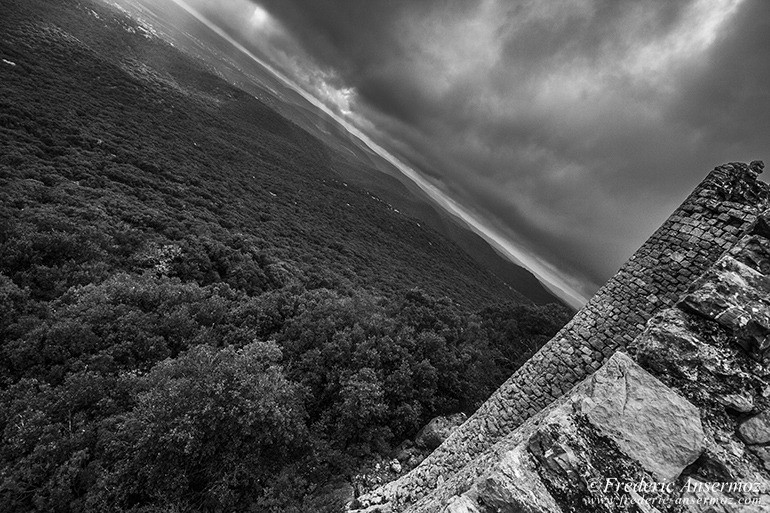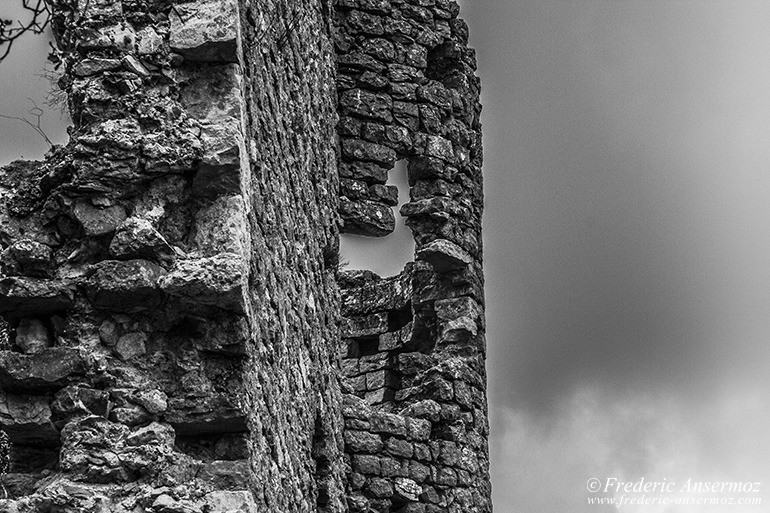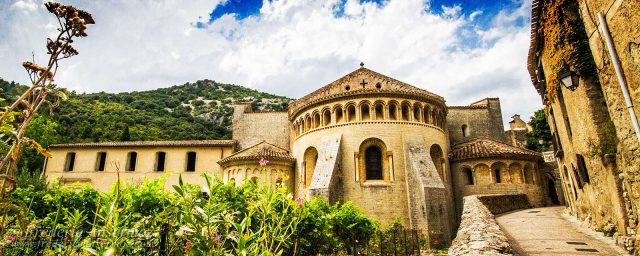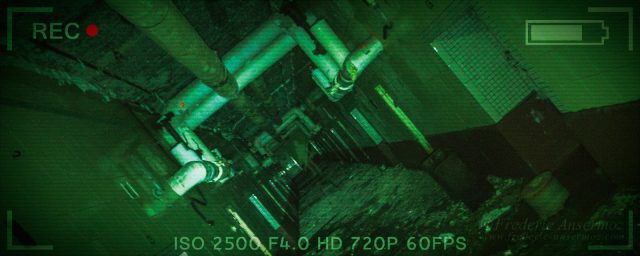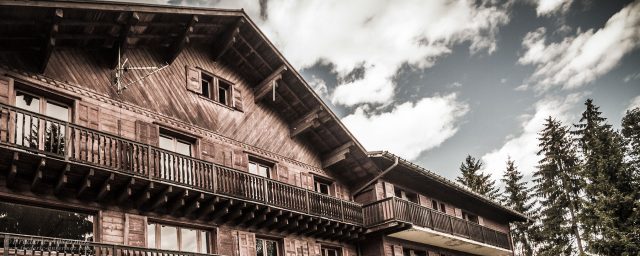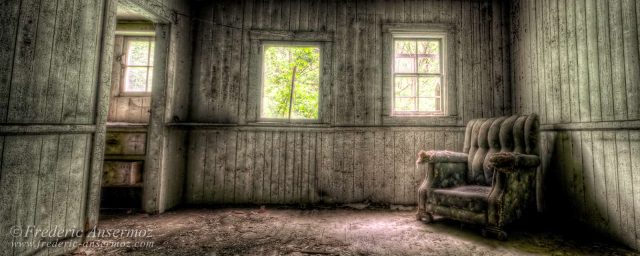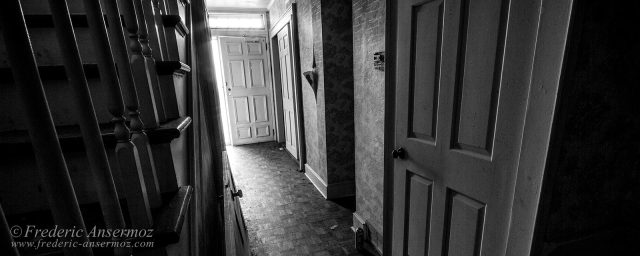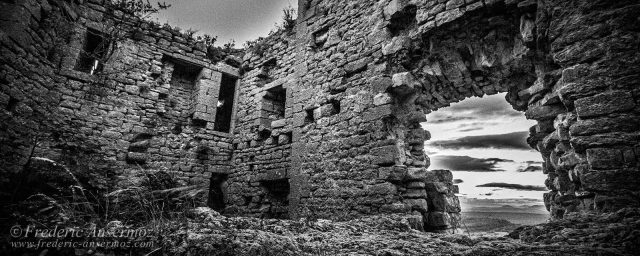Montferrand Castle is a medieval fortress from the twelfth century, situated on the territory of the municipality of Saint-Mathieu-de-Tréviers in the department of Herault, 25 km North of Montpellier.
Accessible only on foot (by GR 60), the castle of Montferrand is built on a limestone spur of the ridge East of the Pic Saint-Loup (658m).
The castle is located opposite the Hortus in a romantic landscape of scrubland oak (garrigue), attracting drawing artists of the eighteenth and nineteenth centuries, then by photographers in the twentieth, and illustrated by painters from all eras.
Montferrand Castle sees North of a 20m vertical cliff as a natural defense. It offers stunning views of the Cevennes, or the impressive150m cliff from the Pic Saint-Loup. Some windows of the castle are still pretty well preserved.
The walls of the castle of Montferrand are hooked directly to the rock, sometimes recut. The dungeon tower was built first, and at the time it was called “the old Montferrand”.
I took advantage of a hike to the Pic Saint-Loup to make pictures of the castle ruins, in black and white, and try to create some effects to produce a fantastic atmosphere. I hope you enjoy it.
The site is an ancient Roman stronghold. But it is mentioned for the first time in history at the beginning of the twelfth century.
History from the twelfth to the seventeenth century
– 1103: Count of Toulouse contends his rights to the castle of Montferrand and part of County Melgueil corresponding to the East of the department of Herault. Mention is made from 1132 belonging to the Earls of Melgueil.
– 1215: During the Albigensian Crusade, it is forfeited to the Count of Toulouse Raymond VI (also with the Castle of Mornas). The castle is given by the Pope to the Bishop of Maguelone (also becoming Earl of Melgueil and Montferrand). Being a pontifical freehold, it is not in any lord and remains exempt from any fee. The bishop then concentrated all powers, spiritual and temporal, and even allows to print money: the melgorien denarius (piece of silver / denier).
– 1245: The bishop gives the commandment to the to captain squire.
– Start the twelfth: County Melgueil is divided into two districts: the Melgueil (now Mauguio whose castle has disappeared) and the Montferrand.
– 1536: The Diocese of Maguelone is transferred to Montpellier.
– 1568: Death of William Pellissier diplomat at the castle of Montferrand. At his death, the castle included a very large library. Despite the loss of its catalog, a copy could be raised through the efforts of François Pittou as the “Index librorum Guilielmi Pelissieri Magalonensis Episcopi.” Citing 332 books, including many Latin and Greek manuscripts as well as beautiful editions of classical authors from Basel, Baden, Venice, Lyon and Paris.
– 1574: During the wars of religion, Protestants seized the castle. Destruction and massacres took place in the villages of the Valley.
– 1584: Antoine Cambous takes the castle back, and make it Catholic again. The site referred to him for “services rendered.” He is inspired by the Renaissance to change the castle. His daughter will get married with Jean Ratte at the castle.
– 1611: The Bishop Pierre de Fenouillet strengthens the defense of the castle to withstand artillery. A gap is then cut into the rock to swing to the mine and the first enclosure added. The Protestants of the Duke of Rohan will try to lay siege to the castle, but without success. They will lift the seat after being bombarded by artillery.
– 1623: The Bishop Pierre de Fenouillet called Captain Jacques Valat lifetime squire of Montferrand castle, for having conquered Montpellier on behalf of Catholics.
– 1659: Death of Jacques Valat and beginning of the decline of the castle.
– XVII: Louis XIV authorizes the bishop Colbert Croissy to destroy buildings: the stones are offered to those who help to demolish it, as a compensation. Transport difficulties will limit the destruction.

